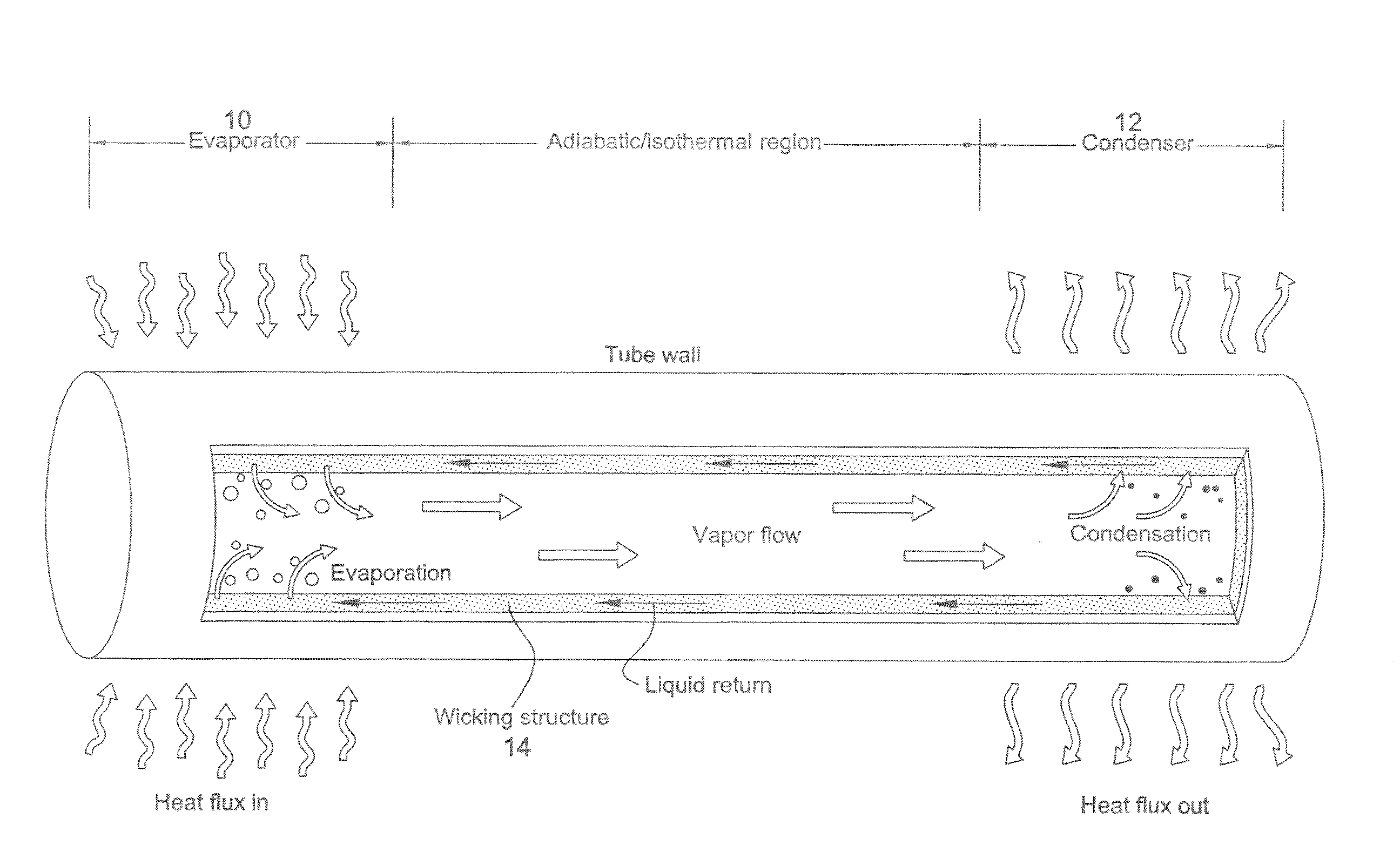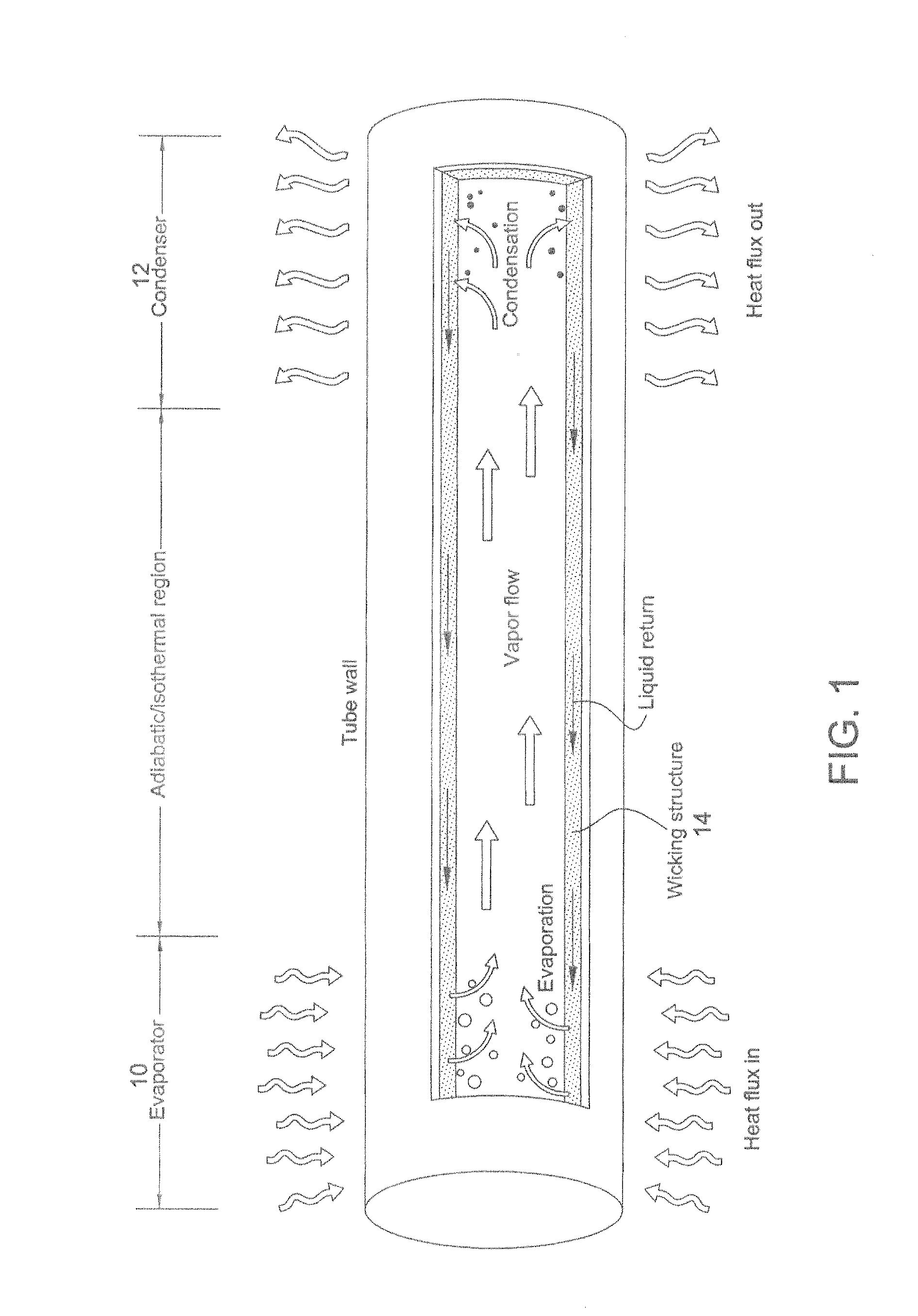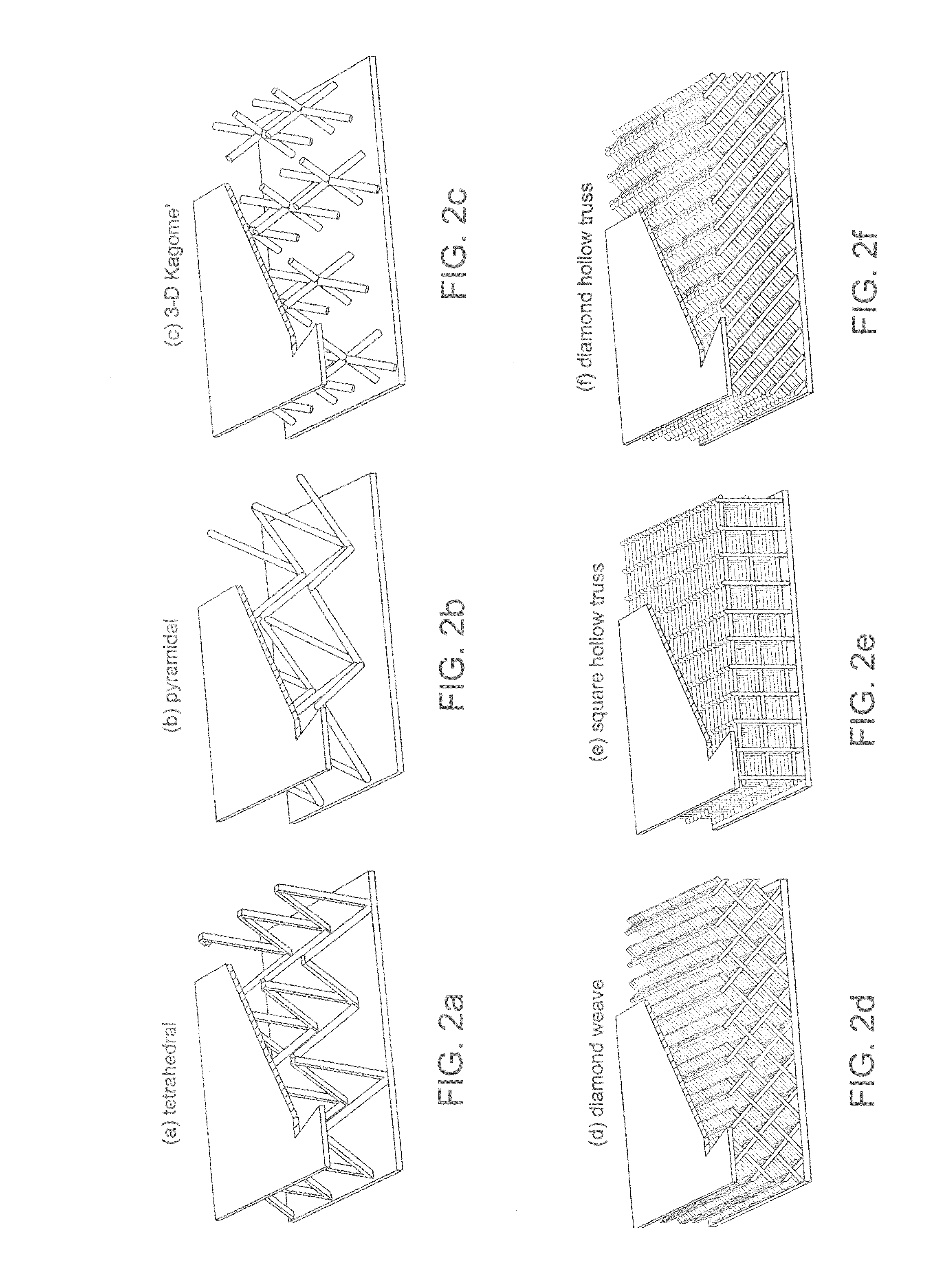Heat-Managing Composite Structures
a composite structure and heat management technology, applied in the field of structural engineering, can solve the problems of high temperature, severe thermal gradient, high stress, and gas turbine engine components, and achieve the effects of high static and dynamic strength, effective management of intense thermal loading, and light weigh
- Summary
- Abstract
- Description
- Claims
- Application Information
AI Technical Summary
Benefits of technology
Problems solved by technology
Method used
Image
Examples
Embodiment Construction
[0024]Structures according to the invention utilize thermal management concepts including heat plate and / or heat pipe concepts. Additionally, they utilize cellular and / or lattice-type, metal structural arrangements. Accordingly, it is beneficial to explain such concepts and structures before describing structural embodiments according to the invention which utilize them.
[0025]First, a heat pipe or heat plate is a sealed system which transfers heat nearly isothermally via the evaporation and condensation of a working fluid. For example, a basic heat pipe arrangement is illustrated schematically in FIG. 1. As illustrated, heat is absorbed in the hot region or evaporator portion 10 of the heat pipe, which causes working fluid contained therein to vaporize. Vaporized working fluid will thus hold the latent heat of vaporization. The evaporation results in a slight internal pressure differential within the heat pipe, which causes the vapor to flow rapidly from the evaporator region 10 to ...
PUM
| Property | Measurement | Unit |
|---|---|---|
| temperatures | aaaaa | aaaaa |
| heat- | aaaaa | aaaaa |
| lattice structure | aaaaa | aaaaa |
Abstract
Description
Claims
Application Information
 Login to View More
Login to View More - R&D
- Intellectual Property
- Life Sciences
- Materials
- Tech Scout
- Unparalleled Data Quality
- Higher Quality Content
- 60% Fewer Hallucinations
Browse by: Latest US Patents, China's latest patents, Technical Efficacy Thesaurus, Application Domain, Technology Topic, Popular Technical Reports.
© 2025 PatSnap. All rights reserved.Legal|Privacy policy|Modern Slavery Act Transparency Statement|Sitemap|About US| Contact US: help@patsnap.com



